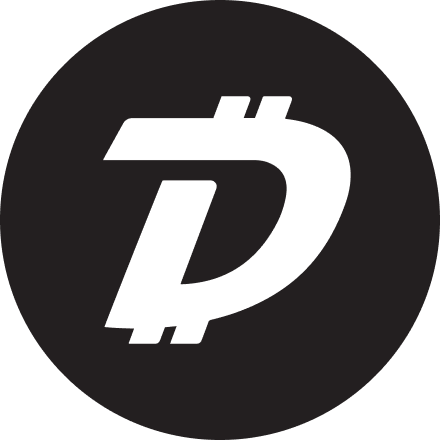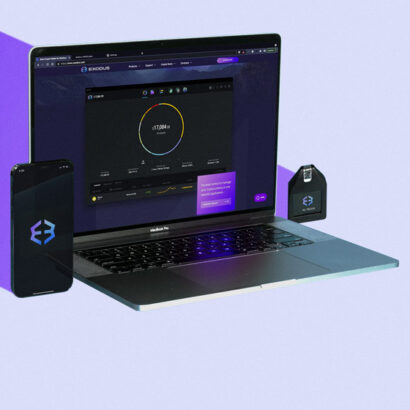What does it take to remain relevant in the crypto world?
While you’ve probably heard of Dogecoin, Litecoin and Bitcoin Cash, it’s less likely you’ve heard of Digibyte.
While Bitcoin has maintained its dominance since 2013, many early cryptos failed to adapt. Looking back at the Top 10 Cryptos by Market Cap (CoinGecko) at the end of each calendar year is a veritable who’s who of tokens. Of older projects that survived and maintained relevance (a few are forks of Bitcoin).
And then there’s Digibyte.
Digibyte moves silent. Like the g in lasagna.
Despite its low profile, DGB has benefited from a recent resurgence. It’s proving itself faster and more secure than the competition.
The DigiByte blockchain itself features three layers, and unlike other major cryptocurrencies, DigiByte has less issues with scaling.
Outline:
- DGB was launched in 2014
- Faster and more secure than Bitcoin
- Employs multiple PoW algorithms to ensure decentralization
- Despite its ecosystem of applications, DGB hasn’t yet gained major traction
- Due to strong fundamentals, DBG is considered (in our opinion) a low-risk and moderate reward investment
- Overall Digibyte remains one of the best blockchains available today
The Problem…
Bitcoin and Ethereum aren’t Secure Enough. And They Can’t Scale.
We’ve touched on this topic before; despite their market dominance, both Bitcoin and Ethereum have major weaknesses that hinder wider adoption. At the moment, both Bitcoin and Ethereum use the energy-intensive Proof-of-Work algorithm which leads to the centralization of mining activities. Just six mining pools account for more than 85% of the mining activities on Bitcoin.
Note: Ethereum will be switching to a Proof-of-Stake mechanism in the near future.
Neither Bitcoin (~5 transactions per second) nor Ethereum (~10 transactions per second) are fast enough to process many transactions instantaneously, leading to a reliance on various Layer 2 solutions. With increased usage of the DeFi, Crypto Gaming and NFT spaces, transactions are becoming prohibitively expensive on Ethereum.
The Solution?
DigiByte –A Secure Three Layer Blockchain.
First of all, DigiByte already has a seven-year record of excellent security; it’s been operating since 2014.
And rather than the reliance of one mining algorithm, there are five different ones which work to increase security by making it harder to centralize mining.
One-fifth of mining rewards are distributed to miners operating each of these algorithms.
Some of these algorithms even allow for people to mine Digibyte on inexpensive computers and hardware. There is also extra built-in protection through MultiAlgo, which protects against 51% attack where a malicious agent is able to pass fraudulent transactions by owning 51% of the nodes.
The DigiByte blockchain consists of three different layers that have been updated throughout its lifespan.
The top layer has the functionality of networks like Ethereum or Binance Smart Chain. It allows for users to build smart contracts, dApps, and customizable tokens.
These transactions are then recorded on the ledger located in the middle layer.
Finally, the core layer is the infrastructure beneath the entire network including the decentralized nodes and client software that secure the network.
How Does DBG Compare to BTC and ETH?
Bitcoin has transaction fees and Ethereum has gas fees. DigiByte similarly, is the token that powers the network. The top layer runs the DigiAsset smart contract network, where miners can earn DGB for securing the network.
You might think that transaction fees for this Proof-of-Work network would be sky-high but you’d be wrong. Digibyte fees are around $0.0005 for simple transactions. But since every transaction requires twenty verifications, it takes five minutes on average.
By comparison:
- Bitcoin fees cost you more than $3 per transaction and may take 10 minutes for verification.
- Ethereum may take 5 minutes to verify transactions but it costs $5 to $10 to send ETH depending on network congestion, with more complicated DeFi actions costing a hefty $60 to $100.
For mining, you can choose the type of algorithm you want to use and which mining pool to use.
Even a regular CPU or GPU can mine DigiByte.
Bitcoin mining requires more expensive ASIC hardware. That means larger conglomerates and companies will not have as much of an advantage when it comes to purchasing and monopolizing mining materials.
Related: Bitcoin Mining vs. the Environment
A Brief History
DigiByte was founded in 2013 and launched in 2014 by Jared Tate, fusing the best of Bitcoin and Ethereum. Tate wanted the network to serve as a more secure and scalable network for both payments and smart contracts. In April 2017, DigiByte became the first major altcoin to integrate SegWit onto the network – an upgrade that improved security on the blockchain while also increasing block capacity.
By the end of 2018, the blockchain launched another security-oriented feature. The Digi-ID allows for on-chain verification without usernames and passwords, without storing any information about your identity.
Then, DigiAssets was launched in May 2019 as the top layer of DigiByte. It allows for the issuances of digital assets, tokens, smart contracts, digital identity, etc. Basically, anything Ethereum can do – DigiByte does as well.
In addition to these major milestones, the implementation of many other security protocols has occurred over the last six years. There’s a solid track-record of improvement and innovation.
The Highs and Lows of DGB
DGB peaked back in May of 2021, reaching an all time high of $0.18. Over the following year DGB fell all the way down to around $0.02. (May 2022).
Approximately 14.9 billion out of a total 21 billion tokens have been issued; the market cap around December 2021 sits at over $500,000,000 – placing it well outside the top 100 cryptocurrencies by market cap. (closer to 200 as pf May 2022).
There are currently around 300,000 wallets holding more than $1 in DGB and 130,000 with more than $100. There are plenty of price predictions for DGB, but most of them are fairly conservative. Few are banking on DGB hitting $100, or $1 for that matter, anytime soon meaning most analysts are bearish on the asset.
Buying and Storing DGB
Despite being old by cryptocurrency standards, few major exchanges currently list DigiByte.
Binance is the only major exchange that lists the cryptocurrency but if it is unavailable in your region, you will need to use one of the alternatives listed here (note that it isn’t listed on any major decentralized exchanges either). While your options may be limited when it comes to buying DGB there are many storage options on multi-coin applications and cold wallets.
Exodus, our favourite multi-coin crypto wallet let’s you easily trade some BTC (or whichever cyrpto you have on hand) for DGB. It’s not like you have to buy it with US dollars to own DGB after all.
| Hot Wallets | Cold Wallets | |
| Wallet | Exodus | Ledger, Trezor |
| Platforms | Windows, Android MacOS, iOS |
Connects via USB or Bluetooth; Available on Desktop and Mobile |
| Cold Storage | Supports Trezor cold wallet integration | |
| Mobile App | Yes | No |
| Initial Setup | Easy
Under 5 min |
Moderate
10 – 15 mins |
| Non-Custodial | Yes | Yes |
| Staking | N/A | N/A |
The Case for Investing
Pros
There is no central corporation or company behind DigiByte and its development.
Since 2014, the community has worked to implement better security measures, smart contracts, and many other key features:
- Multi-algorithm mining increases decentralization and security
- Development of open-source Digi-ID to authenticate your identity without a username or password
- Development of a separate blockchain layer for smart contracts, digital assets and issuance of new tokens
- Network upgrade to make it more difficult to track location
- In addition, the fees on the network are negligible giving it real-world utility, regardless of the amount of people using the network.
Dave from Crazy4Cryptos has been discussing the benefits of DGB for years. Constantly making a case for greater adoption and investment potential. He’s been watching DGB for years and remains bullish.
Watch his video to see what he has to say:
However,
DigiByte still doesn’t have much traction, major adoption milestones or marketing hype.
So, despite its solid features, the price of DGB won’t increase in value unless it receives some sort of adoption.
Many price predictions are fairly bearish:
- Coinpedia: $0.32 by 2022, $1 by 2025
- Price Predictions: $0.19 by 2025
- Ripple Coin News: $2 by 2025
This isn’t a universal sentiment however; as with any cryptocurrency there are ardent believers like Digital Dave (above). People don’t always know what they’re talking about. Remember there were very few people who believed that Giannis Antetokounmpo could be a superstar after his first two NBA seasons.
Should You Consider Investing?
DigiByte is a secure coin with a strong community behind it.
Yet, despite its strong features and fundamentals, it remains relatively unknown.
There isn’t much room for DigiByte to drop and it could hit another high the next time a major feature is added to the network. While the return on the investment may be moderate in the short term, it also seems unlikely that you’ll lose money on it.
We could kind of think of DGB like a local band. Slowly honing their craft while building an audience and an impressive catalogue of songs. When they finally get their big break, and out of nowhere start getting the recognition they deserve, many people who’ve been paying attention will not be surprised.
The fundamentals are great .
The people watching closely and taking notes could find themselves ahead of the curve.
Takeaways
If Bitcoin and Ethereum had a baby, it might look a bit like DigiByte.
This Proof-of-work token is secured through five different algorithms which further decentralizes the nodes in the network.
Anyone can mine it, even with a regular CPU or GPU
The network is quick and fees are negligible.
Smart contracts and dApps were introduced on the blockchain’s top layer, giving it the functionality of many modern blockchains.
It has also developed digital ID verification which does not collect any username and password data.
While DGB is highly secure and scalable, it is more difficult to find a centralized or decentralized exchange to purchase it. Many analysts are not overly bullish on the cryptocurrency, and it isn’t expected to go up 10X to 100X in price anytime soon.
Nonetheless, DGB is a solid low risk Altcoin with strong fundamentals and a strong community behind it. If it gains traction, it could be a great sleeper pick without risking too much.
Do your own research.





